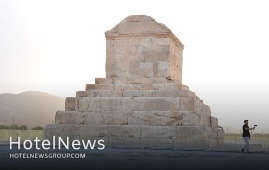
Iranian government has allocated a sum of 200 billion rials (about $4.7 million at the official exchange rate of 42,000 rials per dollar) to develop tourism infrastructure at the UNESCO-designated Pasargadae. A budget of 200 billion rials has been allocated to Pasargadae after President Ebrahim Raisi visited the Achaemenid site earlier in October, a senior tourism official, Javad Vahedi, said on Friday. The Pasargadae complex, as a magnificent World Heritage site, has a high tourism potential in the field of cultural and historical tourism, and we must plan to attract more tourists,” the official explained. Situated about 50 km north of Persepolis, Pasargadae was the first dynastic capital of the Achaemenid Empire, founded by Cyrus II the Great, in Pars, the homeland of the Persians, in the 6th century BC. Its palaces, gardens, and the mausoleum of Cyrus are outstanding examples of the first phase of royal Achaemenid art and architecture and exceptional testimonies of Persian civilization. The UNESCO World Heritage site is also home to a complex water supply system for the time that comprises cisterns, tunnels, underground canals, and ducts, which are locally known as qanats. It is believed that the development of qanats began about 2,500 or 3,000 years ago in Persia (Iran), and the technology spread eastward to Afghanistan and westward to Egypt. Although new qanats are seldom built today, many old qanats are still used in Iran and Afghanistan, chiefly for irrigation. The 160-ha archaeological site of Pasargadae presents some of the earliest manifestations of Persian art and architecture. It includes, among other monuments, the compact limestone tomb on the Morgab plain that once held Cyrus the Great’s gilded sarcophagus; Tall-e Takht (“Solomon’s Throne”), a great fortified platform built on a hill and later incorporated into a sprawling citadel with substantial mud-brick defenses; and the royal ensemble, which consists of several palaces originally located within a garden layout (the so-called “Four Gardens”). Pasargadae became a prototype for the Persian Garden concept of four quadrants formally divided by waterways or pathways, its architecture characterized by refined details and slender verticality. Pasargadae stands as an exceptional witness to the Achaemenid civilization. The vast Achaemenid Empire, which extended from the eastern Mediterranean and Egypt to the Hindus River in India, is considered the first empire to be characterized by a respect for the cultural diversity of its peoples. This respect was reflected in the royal Achaemenid architecture, which became a synthesized representation of the empire’s different cultures. Pasargadae represents the first phase of this development into a specifically Persian architecture which later found its full expression in the city of Persepolis.
Create: Oct 31, 2021 Edit: Oct 31, 2021 Regional News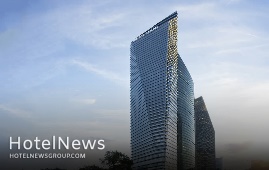
The Ritz-Carlton Hotel Company, L.L.C. is excited to announce the debut of The Ritz-Carlton, Mexico City, providing discerning travelers with a new way to discover one of the world’s most dynamic destinations. Transforming the city’s skyline and sitting amongst the country’s tallest buildings, the hotel is centrally located along the iconic Paseo de Reforma and showcases uninterrupted views of the famed Chapultepec Park. Featuring the legendary service of the brand’s Ladies and Gentlemen, each detail of the hotel is thoughtfully designed to immerse guests in the city’s rich culture and offer a unique perspective on this beloved destination. Featuring unparalleled service, The Ritz-Carlton, Mexico City celebrates legendary Mexican hospitality and offers guests a highly personalized experience. The hotel features a wide range of carefully curated amenities designed for cultural discovery and epicurean adventures or business travel, including The Ritz-Carlton Club® Lounge with an exclusive Club Concierge, a heated indoor swimming pool, large fitness center with state-of-the-art equipment and a signature Ritz-Carlton Spa with six luxurious treatment rooms. Bringing the destination to life in a unique way, The Ritz-Carlton Spa thoughtfully sources local ingredients and botanicals, which are then coupled with the healing and spiritual traditions of Mexico City’s Aztec culture. In addition to relaxing and rejuvenating treatments, the spa features an assortment of wellness areas, including steam rooms, saunas, and a timeless capsule room. Dining at Samos, the Mediterranean inspired restaurant on the 38th floor of The Ritz-Carlton, Mexico City, guests can enjoy cuisine featuring dynamic local flavors for a one-of-a-kind experience. Bringing vast luxury experience and expertise in Mexican, Italian, French, Peruvian and Argentinian cuisines, Chef Jonathan Felix has carefully created each dish to offer a culinary journey where flavors and sensations are elevated with every bite. The epicurean experiences continue through the dessert course with delicate sweets like Nido, an airy mango and passion fruit mousse encased in white chocolate and cradled by a spun sugar nest. The Ritz-Carlton, Mexico City also offers more than 4,300 square feet of meeting space with floor to ceiling windows overlooking Chapultepec Park, ideally suited for a variety of events from meetings to celebratory occasions. The spaces have been designed to foster inspiration and connection whether a large gathering in the ballroom or an intimate board meeting.
Create: Oct 31, 2021 Edit: Oct 31, 2021 International News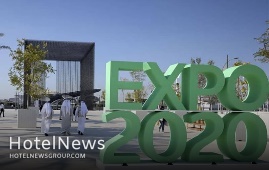
A selection of craftspeople, travel insiders, and exhibitors from Sistan-Baluchestan are getting prepared to promote the southeastern Iranian province at the Expo 2020 Dubai, which is currently underway in the UAE. "[A selection of exhibitors from] Sistan-Baluchestan province will be attending the expo in Dubai, in [the month of] Bahman to present a variety of programs," the provincial tourism chief Alireza Jalalzaei said on Tuesday. A wide range of Sistan-Baluchestan's ancient handicrafts, live performances, and workshops, and introductions to cultural and natural destinations, and the archaeological sites is expected to take the center stage at the Iran pavilion during the event, the official explained. Visitors to the pavilion are offered to discover epitomes of the ancient land in terms of rituals, handicrafts, cultural heritage, and travel destinations. It also reveals more about medical tourism, novel startups, and off-the-beaten tracks. Many countries and companies are also looking to the expo - the first major global event open to visitors since the coronavirus pandemic - to boost trade and investment. According to organizers, the Expo, an exhibition of culture, technology, and architecture under the banner “Connecting Minds and Creating the Future”, is expected to be a demonstration of ingenuity, and a place where global challenges such as climate change, conflict, and economic growth can be addressed together. Iran expects to reap a bonanza from its numerous tourist spots such as bazaars, museums, mosques, bridges, bathhouses, madrasas, mausoleums, churches, towers, and mansions, of which 26 are inscribed on the UNESCO World Heritage list. The collective province -- Sistan in the north and Baluchestan in the south -- accounts for one of the driest regions of Iran with a slight increase in rainfall from east to west, and an obvious rise in humidity in the coastal regions. In ancient times, the region was a crossword of the Indus Valley and the Babylonian civilizations. The province possesses special significance because of being located in a strategic and transit location, especially Chabahar which is the only ocean port in Iran and the best and easiest access route of the middle Asian countries to free waters. The vast province is home to several distinctive archaeological sites and natural attractions, including two UNESCO World Heritage sites, namely Shahr-e-Soukhteh (Burnt City) and Lut desert.
Create: Oct 31, 2021 Edit: Oct 31, 2021 Regional News
Before the pandemic, hotel brands were at a crossroads with increasingly brand agnostic consumers and ever-expanding brand portfolios. But there is evidence that the pandemic may have led to consumers’ renewed appreciation for a well-recognized brand name that assures quality and instills trust. This change in consumer behavior will impact brand management strategies in several significant ways. De-emphasizing brand-proliferation strategiesIn 2010, room demand jumped 6.5% as the industry emerged from a recession. This marked the beginning of a decade-long, demand-fueled brand proliferation that now provides over 1,000 hotel brands for travelers according to STR. Underpinning the surge in brand options are segmentation and brand portfolio strategies. Segmentation allows hoteliers to take a diverse traveler population and organize it into homogeneous groups (e.g., business, staycation) (Kotler et al., 2017). Brand portfolio refers to a “house of brands” approach which incorporates the corporate brand and any number of secondary or subsidiary brands (Muzellec & Lambkin, 2009). Both strategies contributed to the proliferation of new brands that were largely targeting the millennial segment and catering to their desires for work-life balance, authenticity and technology. When people are ready to travel again, their needs might become more homogeneous as their accommodation choices will mostly be based on cleanliness and safety. Moreover, the expectation of a slow recovery in economic activities coupled with a synchronized global recession suggest that rooms demand, which STR forecasts to drop by 51.2% this year, will not return to previous levels anytime soon, let alone grow. Taken together, segmentation to find new niche and a “house of brands” approach to capture excess demand will be less important in the hospitality brand management discussion. Emphasizing brand authenticitySince the pandemic disrupted current and future travel on an unprecedented scale, it may well have reminded consumers of the value of a brand. In fact, a recent IDC survey of over 1,500 U.S. consumers revealed that travelers will be more likely to seek out brand name and four-star or above hotels for assurance when they travel again. This represents an opportunity for hotel brands to reconnect with the public with better defined brand value that goes beyond the rooms and service offerings. One such strategy is authenticity branding. Brand authenticity (i.e., the extent to which a brand is “faithful toward itself, true to its consumers, motivated by caring and responsibility, and able to support consumers in being true to themselves,” Morhart et al., 2014, p.8) has been shown to help luxury hotel brands generate brand love as well as improve business performance (Manthiou et al., 2018). It encompasses not only the traditional hospitality value to genuinely care for others but also modern relationship and cause marketing theories (e.g., corporate social responsibility) to foster meaningful engagement with consumers and various stakeholders. The new generation of hospitality leaders need to grasp the concept of brand authenticity to rise above the current crisis and take the industry to a more sustainable, brand-driven future. Human-technology interaction theories to strengthen brand identityHoteliers had shown reluctance in adopting technology in the past, partly due to high costs, but mostly due to the lukewarm reception (e.g., low usage of loyalty app, perceived low performance of service robots) from consumers who demand a personal touch. But social distancing, online ordering, curbside pickup, and other measures implemented during the pandemic have accustomed consumers to contactless consumption. Many hoteliers (e.g., Hilton) see contactless technology, such as mobile check-in and payment, as necessary standards post-pandemic (Wroten, 2020). Using AI and robotics to further reduce interpersonal contacts will likely be the next frontier to push to gain trust from the pandemic-stricken consumers and encourage them to travel again. The Westin Houston Medical Center hotel using robots in sanitizing and disinfecting its property is a case in point. The challenge for hotel brands is to meaningfully fuse technology (AI and robotics) into a hotel brand’s identity rather than simply use them in operational procedures (e.g., cleaning) that are typically undifferentiated across properties and brands. Theories pertaining to usability, aesthetics, and emotions in human-technology interactions (Wu, Fan, & Mattila, 2015) and how these interactions transpire in favorable brand associations will shed light on this technology branding endeavour for burgeoning hospitality leaders.
Create: Oct 27, 2021 Edit: Oct 27, 2021 Hotel Management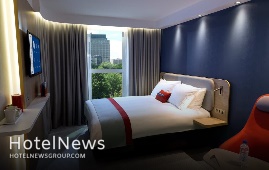
IHG Hotels & Resorts, one of the world’s leading hotel companies, has signed a franchised agreement with Borealis Hotel Group to open Holiday Inn Express Rome – Airport. Planned to open in 2023, the 224-room hotel will add a simple and smart option for travellers on the go by providing the perfect place to rest, relax and recharge, whether for business or leisure. The project will be developed in Parco Leonardo by Fonte (Leonardo Caltagirone Group), one of Italy’s largest developers, and will showcase the fresh and contemporary style of the brand’s Next Generation design, a first for the Holiday Inn Express brand in Italy. This agreement builds growth momentum for IHG Hotels & Resorts in Italy and follows the recent signings and openings of airport locations for the Holiday Inn Express brand across Europe. Holiday Inn Express Rome – Airport brings a new and refreshed offering to visitors; whether travelling for business or leisure. Created with guest comforts in mind, the Next Generation design rooms offer more where it matters most – free Wi-Fi, powerful showers, comfortable beds and added extras for a great night’s sleep. All Holiday Inn Express hotels also offer an Express Start breakfast included as standard. The location of the hotel offers convenient access to Fiumicino Rome International Airport, which is currently undergoing a multi-billon development. Situated in the Parco Leonardo shopping and business centre with a dedicated metro-train stop, the hotel will be perfectly situated to connect locals and guests alike to the heart of the inner city in just 20 minutes. Various retail outlets, restaurants and bars are near the hotel, creating a truly convenient experience for guests travelling to and from Italy.
Create: Oct 27, 2021 Edit: Oct 27, 2021 International News
Mint House, a tech-enabled residential hospitality company offering spacious, apartment-style accommodations across the U.S., announced today its plans for further expansion with new locations in Dallas, TX, Seattle, WA and New Orleans, LA. The openings, scheduled for Fall 2021, are part of Mint House’s expansion plan of adding 3,000 units in 30 markets within the next 12 months, including Brooklyn, Atlanta, D.C., and Charlotte—firmly positioning the disruptive hospitality brand to fundamentally change the way we live, work and play while away from home. The expansion marks the first locations in New Orleans and Seattle for the next-generation hospitality brand as well as the second location in Texas—adding to its already impressive roster of top-tier markets including New York, Austin, Denver, Nashville and Miami. The new locations will feature Mint House’s thoughtful amenities such as full kitchens, washer/dryers, smart workspaces and expansive living areas in addition to their proprietary tech stack, which includes mobile check-in and keyless entry, smart thermostats, pre-stocked groceries, in-room on-demand fitness from MIRROR, and in-room retail experiences—allowing guests to shop their spaces and purchase home goods and decor directly to their home. Mint House guests also have access to an array of high-end building amenities ranging from private outdoor areas and rooftop pools to state-of-the-art-fitness centers and award-winning restaurants.
Create: Oct 27, 2021 Edit: Oct 27, 2021 International News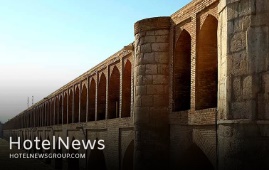
A selection of 200 “untold stories” about Isfahan is now available for you to re-discover the ancient city, which has long been nicknamed as “half the world”. Each story is narrated within a one-minute video clip in different languages to make culture lovers and avid travelers familiar with the off-the-beaten tracks, lesser-known destinations, souvenirs, foods, traditions, rituals, cultural heritage, handicrafts, and above all the hospitable people of Isfahan. Directed by Iranian globetrotter and researcher Majid Erfanian, the clips have been produced jointly by Isfahan Chamber of Commerce, Industries, Mines and Agriculture (ICCIMA), and the private company of Rah Abrisham Iranian Zamin. 100 of the videos, containing 100 fascinating stories, had already been uploaded to social media outlets, while the others were unveiled in an official ceremony hosted by the ICCIMA on Saturday evening. The event was attended by the deputy tourism minister Ali-Asghar Shalbafian, Isfahan governor-general Seyyed Reza Mortazavi, the mayor of Isfahan Ali Qasemzadeh, and Alireza Salarian, the head of Representative Office of Ministry of Foreign Affairs in Isfahan as well as a host of travel insiders, reporters, and journalists who discussed ways to jumpstart tourism. Erfanian stressed the need for greater public awareness about the cultural heritage of the ancient land, saying the “untold stories” are produced for that purpose. “Redefining destinations has rarely happened in the field of traveling [in the country], and now the city [of Isfahan] is a forerunner of such a trend to express its tourism brand in a new way,” he said. Talking about the clips, Erfanian said” “In these multi-language videos, we have tried to put the spotlight on inaccessible or lesser-known historical sites, foods, intangible heritage, people…. characters, craftsmen and figures who have played a role in shaping the identity of Isfahan.” “Sister cities of Isfahan, the diversity of religions, and intangible heritage are amongst other elements we have addressed in the videos,” he added. In an address to the unveiling ceremony, the deputy tourism minister used the context of modern architecture to discuss ways to highlight contemporary Isfahan shoulder to shoulder with its historical core. “We see in the videos that they mostly bring centuries-old architecture and culture into focus, however, we should consider casting a new light on the modern side of Isfahan as well.” “In the production of extra videos, newer ideas may be added to improve the quality of the work,” Shalbafian added. The governor-general of Isfahan reminded the attendees of the unique feature of stories and narratives, in general, to preserve cultural heritage for the coming generations. “In all over the world, paying attention to stories and narratives is of special importance for the development of tourism….. and we have many of such stories that have been forgotten in the course of history.” What you have done in this project is to revive such stories and distinct identities that if ignored, will lead to their disappearance, Mortazavi explained. Ali Karbasizadeh, a senior advisor to the ICCIMA, expressed the need for paying much more attention to the tourism industry, content production, training of all stakeholders and activists, conducting relevant studies, productive investments, tourism startups, and further cooperation with other provinces to develop the tourism paradigm of the country. Furthermore, Karbasizadeh discussed the advantage of adequate official holidays in Iran, saying the number of national holidays in Iran, which has a pivotal role in domestic tourism, is currently insufficient in comparison to many other countries. “If this issue is not addressed and solved, our efforts in other areas would not have desired results.” Salarian for his part noted that making one-minute videos of Isfahan is a good fit. “When we sent [some of the earliest] clips of the series to our embassies in various countries, they expressed a wish to have them translated into other languages as well….Now I see that this has happened.” “Even the municipality [of Isfahan] has produced a series of professional five-minute videos in ten languages that are well received by the audiences.” “Isfahan is one of the important destinations for the high-ranking Iranian officials and visiting officials from other countries. Therefore, it has a unique stance in the field of tourism that should be taken into account,” the senior diplomat explained. Finally, the mayor of Isfahan outlined the importance of storytelling for the time being and in various fields including tourism, saying: “Story [and storytelling] still works in the present day even in psychiatric discussions, story therapy is a growing concept.” “We are ready to expand cooperation and join hands with other activists in the realm of tourism because Isfahan has enormous potential to become a major destination for international travelers,” Qasemzadeh said. Half the world? Soaked in a rich history, Isfahan was once a crossroad of international trade and diplomacy in Iran and now it is one of Iran’s top tourist destinations for good reasons. It is filled with many architectural wonders such as unmatched Islamic buildings, bazaars, museums, Persian gardens, and tree-lined boulevards. It's a city for walking, getting lost in its mazing bazaars, dozing in beautiful gardens, and meeting people. Isfahan is renowned not only for the abundance of great historical bridges but also for its ‘life-giving river’, the Zayandeh-Rood, which has long bestowed the city an original beauty and fertility. Isfahan has long been nicknamed as Nesf-e-Jahan which is translated into “half the world”; meaning seeing it is relevant to see half the world. In its heyday, it was also one of the largest cities in the region with a population of nearly one million. The cool blue tiles of Isfahan's Islamic buildings, and the city's majestic bridges, contrast perfectly with the encircling hot, dry Iranian countryside. The huge Imam Square, best known as Naghsh-e Jahan Sq. (literary meaning “Image of the World”), is one of the largest in the world (500m by 160m), and a majestic example of town planning. Constructed in the early 17th century, the UNESCO-registered square is punctuated with the most interesting sights in Isfahan. It was laid out under the reign of the Safavid ruler, Shah Abbas the Great, to signal the importance of Isfahan as the capital of his powerful empire. It is hemmed on four sides by magnificent buildings: to the east, the Sheikh Lotfollah Mosque; to the west, the palace of Ali Qapu; to the north, the portico of Qeysarieh; and to the south, the eminent Imam Mosque. “The square was at the heart of the Safavid capital’s culture, economy, religion, social power, government, and politics. Its vast sandy esplanade was used for celebrations, promenades, and public executions, for playing polo and for assembling troops,” according to the UNESCO website. Right at the northern limit of the Imam Square, one will find “Qeysarieh Gate”, which leads to the unique and unforgettable “Grand Bazaar of Isfahan”. This vaulted marketplace is one of the largest and most labyrinthine bazaars in the country. Shops offering handicrafts, souvenirs, jewelry, silverware, traditional ceramics, and authentic Persian carpets. Modern Isfahan is now home to some heavy industry, including steel factories and a nuclear facility on its outskirts, however, its inner core wants to be preserved as a priceless gem. The city is also home to a gigantic, professional, and state-of-the-art healthcare city, which is a major destination in the realm of medical tourism. Unknown destination Even before the pandemic, Iran’s tourism was already grappling with some challenges, on top of those Western “media propaganda” aimed at scaring potential travelers away from the Islamic Republic. Some experts believe Iran is still somehow “unknown” for many potential travelers due to such a “media war”. They, however, consider bright prospects for the tourism sector of the country if it vigorously pursues comprehensive strategies to counter U.S.-led propaganda and strict sanctions, yet does its best to loosen tough travel regulations.
Create: Oct 26, 2021 Edit: Oct 27, 2021 Regional News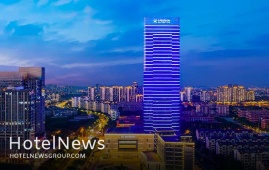
Radisson Collection, Radisson Hotel Group’s anthology of iconic lifestyle hotels, has continued to expand its portfolio in China with the launch of Radisson Collection Hotel, Wuxi, a stylish and sophisticated new downtown hotel that puts guests in the heart of one of China’s most compelling cities. Newly opened on 22 October 2021, Radisson Collection Hotel, Wuxi is nestled in the city’s Xishan district, just 20 minutes’ drive from Sunan Shuofang International Airport and 15 minutes from Wuxi Railway Station. From this prime location, visitors can uncover the soul of this waterfront city, which sits on the banks of Lake Taihu. Peaceful parks, waterfront walkways and enchanting temples are juxtaposed with a modern metropolis of soaring skyscrapers and high-tech business parks, making Wuxi a highly rewarding destination for business and leisure travelers alike. Guests can stay in a choice of 318 spacious rooms or suites, ranging from the 40 sqm Collection Superior Rooms to the spectacular 258 sqm Presidential Suite, all featuring sleep-inducing beds, working areas, Nespresso coffee machines, fast Wi-Fi and smart bathroom fixtures. The Executive Lounge provides exclusive services and amenities on the 27th floor, overlooking the skyline. Radisson Collection Hotel, Wuxi will also be the first to offer the brand’s new wellness concept, The Spa at Radisson Collection, which is designed to help guests achieve a better version of themselves. This immersive approach focuses on three areas – mood, mind and interaction – for holistic health and wellbeing. The hotel’s serene spa comprises massage and yoga spaces, a sauna and an indoor swimming pool with stunning views. Impressive dining and social experiences can be enjoyed at a choice of five restaurants and bars, including an all-day dining restaurant Maillard 69, the first 3D immersive restaurant in Wuxi; Lan Ting Ge, the Chinese restaurant that specializes in authentic Huai Yang cuisine; Ji Bai Qiu, the contemporary Japanese restaurant; and a whisky bar, Elaresanse. Meeting planners can host talk-of-the-town events in 2,400 sqm of flexible function venue space, including an 800-guest Grand Ballroom. Every stay will be underpinned by Radisson Collection’s unique “Yes, I Can!” service philosophy and the fine Chinese hospitality. I am delighted to unveil Radisson Collection Hotel, Wuxi, as we continue to expand this exceptional collection across China. Following recent openings in Shanghai and Nanjing, this chic hotel represents another major milestone in our development. China is now home to five Radisson Collection hotels, more than any other country, which shows how Chinese owners and guests have embraced this flexible, locally-influenced concept,” said Gary Ye, Vice President, Operations, China, Radisson Hotel Group. Radisson Collection Hotel, Wuxi is a sleek and stylish hotel that exudes the grace of this lakeside city. With our spacious accommodation, five-star facilities and extensive event space, and we expect to become the destination-of-choice for experience-seeking leisure visitors, business travelers, corporate events and one-of-a-kind weddings. We look forward to welcoming the world to Wuxi,” commented Mike Zhang, Resident Manager, Radisson Collection Hotel, Wuxi. One of the largest cities in Jiangsu province, Wuxi is located just 125 km from Shanghai and directly connected to this major metropolis by bullet train. Radisson Collection Hotel, Wuxi becomes the fifth Radisson Collection hotel in China, as this captivating brand continues to inspire guests across the country. It also marks Radisson Hotel Group’s second property in Wuxi, following Radisson Blu Resort Wetland Park Wuxi.
Create: Oct 25, 2021 Edit: Oct 25, 2021 International News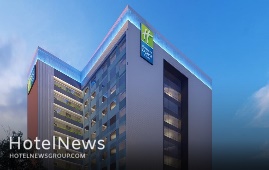
IHG® Hotels & Resorts, one of the world’s leading hotel companies, has signed a management agreement with notable real estate developer, Dinesh Kumar Choudhary (HUF) for a new hotel – Holiday Inn Express & Suites Jaipur Karoli Bagh located at Gopalpura Byepass, in the capital of Rajasthan. The brownfield hotel featuring 141 keys is expected to be operational by the first quarter of 2023. Jaipur is the largest city in Rajasthan and one of the most popular leisure destinations, both for domestic and international travellers. It is an integral part of the Golden Triangle, a prominent tourist circuit connecting the national capital Delhi, Agra and Jaipur, and is also a preferred wedding destination in India. Furthermore, the city houses numerous industries and is considered as the economic capital of Rajasthan. With the new signing of Holiday Inn Express & Suites Jaipur Karoli Bagh, the city will now have three IHG hotels between Crowne Plaza, Holiday Inn and Holiday Inn Express, catering to varied guest profiles. Holiday Inn Express & Suites Jaipur Karoli Bagh will be located on the Gopalpura Bypass road, at a convenient 15-minute drive from the airport. The hotel will also be at a short driving distance from the city centre, business district, tourist attractions, as well as key dining and shopping destinations. With excellent visibility and access, Holiday Inn Express & Suites Jaipur Karoli Bagh will provide a convenient stay experience to both business and leisure travellers. The newly signed hotel will feature well-appointed modern guest rooms and all the necessary facilities for a comfortable stay experience. The hotel will also have the brand’s signature ‘Great Room’, ‘Small Bar’, a specialty restaurant and a lounge to relax and unwind. Other essential facilities will include a fitness room, and meeting spaces for business and social gatherings. Commenting on the new development, Sudeep Jain, Managing Director, South West Asia, IHG Hotels & Resorts, said, “We are thrilled to announce the signing of a new Holiday Inn Express & Suites hotel in Jaipur and solidify our presence in the state of Rajasthan. With a rich culture, history and cuisine, Jaipur is one of the most popular tourist destinations of India. With diverse guest profiles visiting the city, there is an increasing need for mainstream accommodation, and we are confident that Holiday Inn Express & Suites Jaipur Karoli Bagh will be a great choice for travellers looking for a simple and engaging hotel stay experience. He added: this new signing is also in line with our strategy to expand our ‘essentials collection’ across key markets in India and further strengthen our mainstream presence in the country, in line with market demands.” Mr. Dinesh Kumar Choudhary, Head of Hindu Undivided Family (HUF) added, “We are excited to partner with an internationally and domestically known and trusted hospitality brand like IHG. With a combination of an excellent location, the power of IHG’s distribution system, strong loyalty programme and expertise in the hospitality segment, we are confident that Holiday Inn Express & Suites Jaipur Karoli Bagh will emerge as a popular choice amongst the travellers visiting Jaipur.” Holiday Inn Express is one of IHG’s fastest-expanding hotel brand. It is designed for the smart travellers who are looking for a simple, yet engaging place to reconnect and refresh. IHG® currently has 41 hotels operating across five brands in SWA, including Six Senses, InterContinental Hotels and Resorts®, Crowne Plaza®, Holiday Inn® , Holiday Inn Resort® and Holiday Inn Express®, and a strong pipeline of 50 hotels due to open in the next 2-3 years.
Create: Oct 25, 2021 Edit: Oct 25, 2021 International News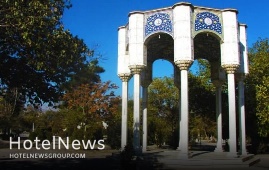
Ibn Babawayh is a vast historical cemetery located in Rey, southern Tehran, in which many Iranian figures have been laid to rest. It is named after Ibn Babawayh who was an Islamic theologian and the author of one of the “Four Books” that are the basic authorities for the doctrine of Twelver Shi’ism. Also called Sheikh Saduq, Ibn Babawayh, whose full name is given as Abu Jafar Muhammad ibn Abu al-Hasan Ali ibn Husayn ibn Musa al-Qummi, was born in c. 923 CE, Khorasan, northeast Iran, and he died in Ray in 991. Originally built during the reign of Samanids (819-999), the cemetery has been ruined many times, and for various reasons, such as the Mongol invasion (1219-1221 CE), several civil wars, and also natural disasters. There is an interesting story behind the construction of the current cemetery which occurred during the Qajar era. Once, as Haj Mohammad Baqer Khansari writes in Rozat al-Janat, heavy rain destroyed and made a hole in the old cemetery. Workers went to repair the destruction, but they found an intact corpse and an inscription in the cellar of the mausoleum. Based on the inscription, the mausoleum was built 800 years ago. By the way, the news of finding an intact corpse in the mausoleum of Sheikh Saduq reached the court and the king sent an envoy to the site to confirm the truth of the story. His current tomb consists of a groin stone vault with eight pillars decorated with beige and blue tiles and is the site of pilgrimage for the Muslims. In addition, the atmospheric cemetery built around the tomb of Sheikh Saduq is one of the most revered graveyards in the ancient town of Rey. Wandering around the cemetery, you come across the graves of famous Iranian figures like Gholam-Reza Takhti, the popular Olympic gold medalist wrestler, Ali-Akbar Dehkhoda, the well-known linguist, poet, and scholar, Hossein Behzad, the eminent miniaturist, Jalal Al-e Ahmad, the contemporary writer, and many others. There used to be many private family mausoleums featuring beautiful historical buildings in Ibn Babawayh, many of which are destroyed now due to urban development projects. Rey was one of the capital cities of the Parthian empire (3rd century BC–3rd century CE) and it was captured by the Muslim Arabs in 641 CE. During the reign of the Muslim caliph al-Mahdi in the 8th century, the city grew in importance until it was rivaled in western Asia only by Damascus and Baghdad. According to Britannica, Islamic writers described it as a city of extraordinary beauty, built largely of fired brick and brilliantly ornamented with blue faience (glazed earthenware). It continued to be an important city and was briefly a capital under the rule of the Seljuqs, but in the 12th century, it was weakened by the fierce quarrels of rival religious sects. In 1220 the city was almost destroyed by the Mongols, and its inhabitants were massacred. Most of the survivors of the massacre moved to nearby Tehran, and the deserted remnants of Rey soon fell into complete ruin.
Create: Oct 25, 2021 Edit: Oct 25, 2021 Regional News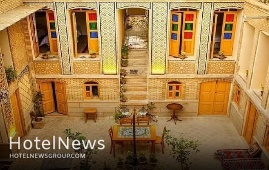
Over 11,000 job opportunities are estimated to be generated by implementing 245 tourism-related projects across the northeastern Khorasan Razavi province, the deputy provincial tourism chief has announced. Upon the completion of the ongoing projects that have been underway for about ten years, a total of 11,500 jobs will be provided for the locals, CHTN quoted Ahmad Dinari as saying on Sunday. Some 500 trillion rials (about $12 billion at the official exchange rate of 42,000 rials per dollar) have been invested in the mentioned projects so far, the official added. The projects include hotels, apartment hotels, guesthouses, travel complexes, recreational centers, and villages specifically developed for health tourism, he noted. He also noted that foreign investment in the tourism sector of the province amounted to $90 million last year. Mashhad, the capital of Khorasan Razavi province, is Iran’s holiest and second-largest city. Its raison d’être and main sight is the striking massive shrine complex of Imam Reza (AS), the eighth Shia Imam Dozens of five-star hotels and hostels are dotted across Mashhad. The city has also the highest concentration of water parks in the country, and it also embraces a variety of cultural and historical sites that are generally crowded. The metropolis is also a good place to buy top handwoven rugs and carpets, and it’s a staging post for travel to Turkmenistan, Afghanistan, and little-touristic Khorasan regions. Before the coronavirus puts almost everything on lockdown, Mashhad, played host to thousands of travelers and pilgrims who come from various Iranian cities, neighboring countries, and even across the globe to visit the holy shrine. According to official statistics, some 37 million Iranian pilgrims and travelers visited the shrine city of Mashhad during the first ten months of the past Iranian calendar year 1398 (March 21, 2019- March 10, 2020). Of whom some eight million came by road, six million by rail, 3.8 million by air, and 18 million by private cars.
Create: Oct 19, 2021 Edit: Oct 19, 2021 Regional News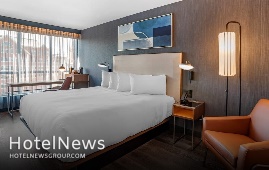
Courtyard by Marriott will return to the Dupont Circle neighborhood in Washington, D.C., boasting a meticulous redesign and ready to host guests beginning in November 2021. Centrally located at 1733 N Street NW in a vibrant and historic mixed residential and commercial neighborhood, the anticipated hotel is tucked away among picturesque row houses and parks, but just steps away from Embassy Row, the Cathedral of St. Matthew the Apostle, and the National Geographic Museum. Courtyard by Marriott, Washington DC Dupont Circle will be suitable for all types of travelers. Central among a myriad of attractions in the nation’s capital, the hotel provides a welcome respite for professionals conducting business in the area, a convenient jumping off point for tourists visiting historical monuments, or locals exploring the diverse and exciting restaurants and shops of Embassy Row. Nestled in the charming Dupont Circle neighborhood, guests will also find themselves surrounded by many nearby parks, including Rock Creek Park, Dupont Circle Park, Stead Park, Farragut Square, and others. And just a few blocks from the Metro (Red – Dupont Circle), location is truly everything – offering affordable and efficient access to Union Station, all three major international airports, and points across the entire region, including the waterfront Navy Yards district, Arlington Cemetery and the United States Capitol building. The Dupont Circle iteration of Courtyard elevates the guest experience with a mid-century modern, innovative redesign, featuring stylish tones of burnt orange, royal blue and silver, along with contemporary custom furniture and the latest technology to stay connected. With 10 stories and 143 spacious guest rooms available in both King and Double Queen configurations, patrons will enjoy large windows that provide an abundance of natural light and views of the picturesque and bustling neighborhood. Each room offers 100% black-out shades to ensure that guests will awaken refreshed and each room also offers a large working desk to foster creativity and productivity. Guests may also enjoy the hotel’s SMART TVs featuring Netflix, Hulu, and other streaming platforms. The sleek lobby welcomes visitors with contemporary, flexible spaces for business and leisure travelers alike with check in pods and semi-private high-backed booths that feature built-in monitors conducive to meetings or relaxing while enjoying the hotel’s free WiFi. The hotel also offers a spacious fitness center with strength training and cardio equipment for guests to stay reinvigorated and energized. The hotel’s redesign also features two food & beverage options adjacent to the hotel lobby. The Bistro will offer a fast-casual dining environment with fresh, made-to-order options. This dining area is an ideal spot for guests to gather with colleagues or friends and enjoy the full-service food and bar offerings. The Crate, also located in the lobby, features a 24/7 ready-made concept for those who are on the go. The new prototype for Courtyard is making its regional debut in the Dupont Circle location, with packaged items offered in a grab-and-go, contactless setting. This Courtyard by Marriott in Dupont Circle will be the fifth in the nation’s capital and its new location’s modern redesign transforms the brand’s footprint in the Washington, D.C. region as it serves both business and leisure guests. Courtyard by Marriott’s return to the Dupont Circle area offers guests an opportunity to experience a quiet and localized neighborhood filled with tree-lined streets and historic homes while also enjoying the conveniences of a city center hotel.
Create: Oct 16, 2021 Edit: Oct 16, 2021 International News
